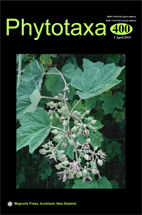Abstract
Allium Linneaus (1753: 294) is one of the largest monocot genera with about 900 species (Govaerts et al. 2019) naturally distributed throughout the northern hemisphere (Stearn 1978, 1992, Fritsch & Keusgen 2006, Friesen et al. 2006, Fritsch & Abbasi 2008). The main centre of biodiversity occurs in Southwestern and Central Asia and the Mediterranean region, a smaller center is found in western North America (Friesen et al. 2006, Nguyen et al. 2008). The genus is characterized by bulbs enclosed in membranous, fibrous or reticulate tunics, free or basally connate tepals and often a subgynobasic style (Friesen et al. 2006). The genus Allium is a member of Amaryllidaceae subfam. Allioideae, tribe Allieae (APGIII 2009, Chase & Reveal 2009). Recent phylogenetic studies based on molecular data were combined with morphology, anatomy, and cytology resulting in new proposals for sectional and subsectional relationships (Linne von Berg et al. 1996, Dubouzet & Shinoda 1999, Friesen et al. 2000, 2006, Gurushidze et al. 2008, Nguyen et al. 2008, Li et al. 2010, Choi et al. 2012). The most recent Allium classification includes 15 subgenera and 80 sections (Friesen et al. 2006). Allium is a taxonomically quite complex and has unresolved nomenclatural problems. In the last decades, many Allium taxa were newly described for Turkey and the number of species known to occur in the country is approximately 200, classified into 15 sections, ca. one-third which being endemic (Kollmann 1984, Koyuncu 2012, Özhatay & Kandemir 2014, Ekşi et al. 2015, 2016, Duman et al. 2017, Fırat et al. 2018).

